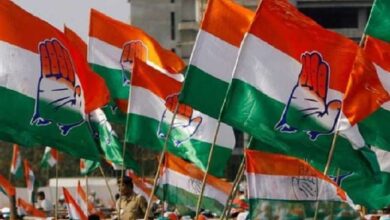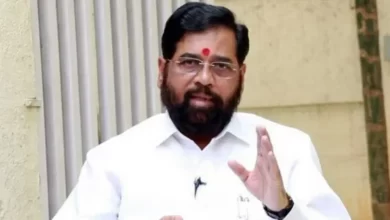how to get rid of starvation

[ad_1]
Governments have failed to provide nutritious food to the children as per their requirement.
Rizwan Ansari
Governments have failed to provide nutritious food to the children as per their requirement. It is ironic that we stand at the top of food grains and milk production, food grains are rotting in government godowns, yet the world’s most malnourished children are in India. India’s position has been described as poor in the recently released Global Hunger Index. India not getting a place in the first hundred in the list of one hundred and sixteen countries is enough to show the seriousness of the situation. This time India is ranked one hundred and one in the Global Hunger Index. Surprisingly, in this index we are also behind our neighbors Pakistan (92), Bangladesh (76) and Myanmar (71). The report described the level of hunger in India as ‘severe’.
However, if you look at the facts, in 2020, India was ranked fourth, now it has slipped down seven places. Obviously, there are flaws in our efforts to combat hunger and we are not taking the necessary steps in this direction. It is worth noting that the total countries in the list of 2020 were one hundred and seven. Accordingly, the number of countries that performed worse than India last year was thirteen, while this time it is fifteen. That is, India has only got the advantage of two places. But the downside is that in 2020 ninety-three countries were better than us, whereas this time hundred countries are better than us.
In this index, countries have been given zero to hundred points on the basis of hunger status. A score of less than ten means that the problem of hunger in the country is extremely low. Similarly, a score of 20 to 34.9 means a serious hunger crisis and a score of 35 to 49.9 means that the situation is challenging. This time India has got 27.5 points i.e. the crisis is serious. Now the question is why is there such a situation? Actually, this index is prepared on four scales. These are undernourishment, children who are underweight for height, children with low height for age and child mortality (mortality rate of children below five years of age). According to the report, 17.3 percent of children in India are suffering from the problem of low weight in proportion to the height and this figure is the maximum among all the countries of the world. At the same time, 34.7 percent of children are victims of dwarfism. However, India’s position in child mortality rate is said to be good. But India has come under severe criticism at the level of nutrition.
If we talk beyond the hunger index, then the condition of India is not being judged any better. If the claims of the Global Nutrition Report-2020 are to be believed, then India is among the eighty-eight countries in the world that will not be able to achieve the global nutrition goals for the next four years i.e. by 2025. That is, we will have to deal with anomalies like low weight in children and obstruction in their physical growth for a long time. If we look at the National Family Health Survey-5 of the Government of India, then the situation of child malnutrition in India remains serious.
Child stunting and weight loss with age have increased in more than half the states. Surprisingly, this problem is in states like Gujarat, Maharashtra, West Bengal, Telangana, Assam and Kerala. Clearly, the governments have failed to provide nutritious food to the children as per their requirement. It is ironic that we stand at the top of food grains and milk production, food grains are rotting in government godowns, yet the world’s most malnourished children are in India. However, to tackle the problem of malnutrition among children, efforts like Midday and Poshan Maah have been seen in schools. Now the exercise of renaming the mid-day meal scheme to Pradhan Mantri Poshan Shakti Nirman (PM-Poshan) testifies to the government’s trepidation to tackle malnutrition.
There is often a tendency for governments to shy away from blaming the growing population to hide their failures when they lag behind in indices like hunger. Anyway, many problems of the country are blamed on the increasing population. But this hunger index has exposed all these baseless claims. At present the population of India is about one billion and thirty five crores, while the population of China is about one billion and forty one crores. But this country with the world’s largest population is included in the group of the best performing countries in this index. China has been ranked in the top eighteen countries. But it is a matter of concern that India is included among the eighteen countries from the bottom.
The reason behind the dire situation of hunger in India is due to corruption in welfare schemes and problems like Khanapurti. A report by the Ministry of Education (erstwhile Ministry of Human Resource Development) in 2018 revealed that almost half of the children in Bihar and Uttar Pradesh do not get mid-day meals. Forty-nine per cent of children at primary level and forty-four per cent in upper primary schools in Bihar, whereas in Uttar Pradesh forty-one and forty-seven per cent children are deprived of mid-day meals, respectively. Even at the national level, almost half of the children were told that they were not getting mid-day meals.
Indeed, serious efforts are needed to change this horrific picture of malnutrition. For example, schemes like ICDS (Nutrition), PDS (Aahar), MNREGA (employment) etc. need to be implemented in a concrete manner. Malnutrition is a complex problem and it is also directly related to the livelihood of the families of malnourished children. Unless poor families have any means of livelihood, it is not possible to fight the problem of malnutrition. Therefore, families identified with malnutrition should be provided social security under public distribution system and MNREGA.
The government may be claiming to provide free food grains to eighty crore people, but it is necessary to investigate whether it is actually reaching the needy or not. Due to rampant corruption in such schemes, food grains not reaching the people is not a new thing. The news of breakup in the amount of mid-day meal in the name of students by imposing fake attendance in schools is not a new thing. Therefore, if the biometric attendance system of students is implemented in schools, then corruption in the mid-day meal scheme can be curbed to a great extent. However, it has already started in some states. Apart from this, there is a need to increase expenditure on health services to strengthen nutritional rehabilitation centers and health centres. India still spends only three percent of its GDP on health services, while America spends 16.9 percent, Germany 11.2 percent, Japan 10.9 percent.
The problem of malnutrition is also related to problems like poverty and unemployment. If people get employment, their influx increases, then the standard of living will improve. People will also be able to give good education to the children. By preventing early marriages, children can be saved from being malnourished. Along with these measures, what is most important is that the government should show strong will to fight malnutrition. It is due to lack of will that despite having the largest population, China has managed to make it to the top twenty countries and we are less than a hundred.
.
[ad_2]






